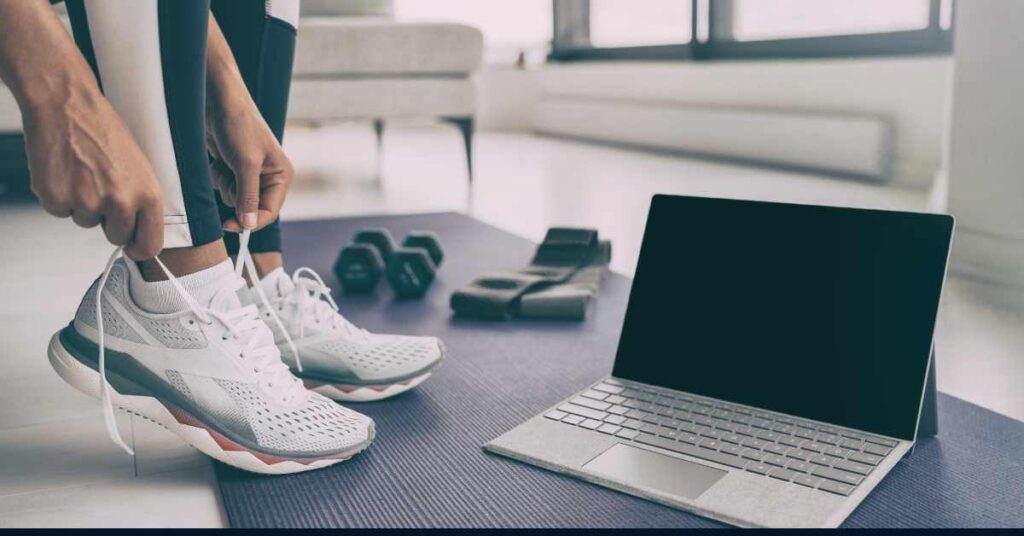Can You Use Running Shoes for Gym Workouts?

Running shoes are a staple in most people’s closets, making them a convenient choice for workouts. But are they the right choice for gym activities? Designed primarily for forward motion and repetitive impact, running shoes excel in certain areas but fall short in others. Using them inappropriately during workouts can lead to discomfort or even injury. In this article, we’ll explore whether running shoes are suitable for gym workouts, the pros and cons, when they can be used, and better alternatives for various gym activities.
The Design of Running Shoes
Running shoes are engineered specifically for activities like road running and treadmill workouts. Their primary purpose is to support repetitive, forward-motion strides, and their design reflects this. Key features include ample cushioning to absorb impact during running, ensuring comfort and reducing strain on joints. They are also made with lightweight materials, enhancing endurance and speed. However, this focus on forward motion comes at the expense of lateral stability. Running shoes often lack the side-to-side support needed for activities like weightlifting or agility drills. Their flexible soles support a natural heel-to-toe motion but are less effective in providing a stable base for exercises requiring a firm footing.
Pros and Cons of Using Running Shoes for Gym Workouts
The Pros
Running shoes offer certain advantages when used in the gym. Their cushioning provides excellent comfort, making them suitable for light cardio exercises such as walking or jogging on a treadmill. They are also lightweight, which helps reduce fatigue during prolonged sessions. Additionally, their availability makes them a convenient choice, as many people already own a pair.
The Cons
Despite these benefits, running shoes have significant limitations when it comes to gym workouts. Their lack of lateral support and stability makes them unsuitable for activities like weightlifting or high-intensity interval training (HIIT). The elevated heel, a common feature in running shoes, can increase instability during heavy lifts, potentially compromising your form and increasing the risk of injury. Furthermore, the soft cushioning in running shoes is not designed for multi-directional movements, leading to faster wear and tear when used for such activities.
When Can You Use Running Shoes in the Gym?
Running shoes are appropriate for specific gym activities that align with their design. They are an excellent choice for treadmill running, as they are specifically built for repetitive forward motion. Similarly, elliptical workouts, which involve minimal lateral movement, are suitable for running shoes. Light cardio classes or walking-based workouts also benefit from the comfort and cushioning provided by running shoes. In these scenarios, their lightweight and impact-absorbing design shine.
When Should You Avoid Running Shoes in the Gym?
There are certain gym activities where running shoes are not the best option. Weightlifting, for instance, requires a flat and stable base to ensure proper form and reduce injury risks. Running shoes’ elevated heels and flexible soles can compromise stability during heavy lifts. Similarly, HIIT and CrossFit workouts demand lateral support and stability, which running shoes lack. Agility drills, such as lateral jumps or quick direction changes, also require shoes with enhanced grip and multi-directional support. For these activities, running shoes fall short in providing the necessary safety and performance features.
Alternatives to Running Shoes for Gym Workouts
For better results and safety, consider gym shoes designed for specific activities:
- Cross-Training Shoes: Ideal for gym-goers who perform a variety of exercises, cross-training shoes offer lateral support and versatility. Options like the Reebok Nano X3 and Nike Free Metcon 4 are excellent choices.
- Weightlifting Shoes: Featuring flat soles and elevated heels, these shoes provide stability and promote proper posture during heavy lifts. The Adidas Adipower Weightlifting Shoes are a top option.
- HIIT-Specific Shoes: Built to handle high-impact, multi-directional movements, these shoes, such as the Under Armour HOVR Rise 3, offer the support needed for explosive workouts.
- Barefoot or Minimalist Shoes: These promote natural foot movement and stability, making them ideal for weightlifting and certain bodyweight exercises. Vibram FiveFingers is a popular choice.
Tips for Choosing the Right Gym Shoes
To find the perfect gym shoes, start by identifying your workout routine. If your sessions include cardio, weightlifting, or agility drills, choose shoes designed for those specific activities. Look for features like lateral and arch support for stability, particularly during HIIT or CrossFit workouts. A flat, stable sole is crucial for weightlifting, while breathability and comfort ensure long-lasting wear during intense sessions. Always ensure your shoes fit snugly without pinching or slipping to maximize both performance and safety.
Frequently Asked Questions
Q1: Can I use running shoes for weightlifting?
It’s not recommended. Running shoes lack the flat base and stability needed for heavy lifting, which can lead to poor form and increased injury risk.
Q2: Are running shoes good for HIIT workouts?
No, running shoes don’t provide the lateral support required for high-intensity, multi-directional movements. Cross-trainers are a better alternative.
Q3: How can I tell if my running shoes are worn out?
Signs of wear include reduced cushioning, visible damage to the outsole, and discomfort during use.
| Feature | Running Shoes | Gym Shoes |
|---|---|---|
| Cushioning | High | Moderate |
| Lateral Support | Minimal | Excellent |
| Stability | Soft, flexible soles | Flat, stable soles |
| Best For | Running, walking | Weightlifting, HIIT |
Conclusion
While running shoes are suitable for activities like treadmill running and light cardio, they are not ideal for most gym workouts. Activities such as weightlifting, HIIT, and agility drills require specialized footwear to ensure safety and enhance performance. Investing in the right gym shoes can elevate your workouts, protect your joints, and reduce the risk of injury. Choose footwear tailored to your workout routine, and your feet will thank you.







